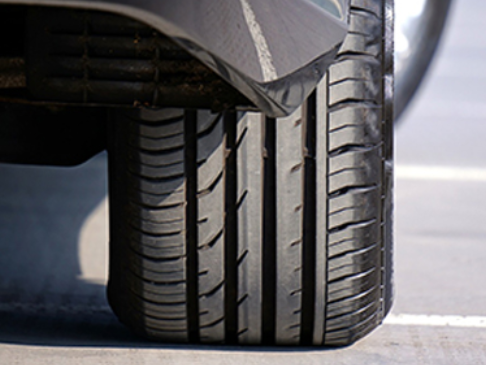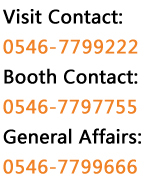Tire Wear and Depth
Make sure to regularly check the tread depth of your tires and replace them when they are worn. This will guarantee maximum traction and grip. Change your tyres before your tread depth is worn to 1.6mm. Your safety and mobility depend on a good level of tread depth because the tread grooves disperse water from underneath your tyre, helping maintain control, the more tread depth you have remaining on your tyres the more water they can disperse, reducing the risk of aquaplaning and correct air pressure, as well as regular vehicle maintenance, will ensure your tyres perform at their best for the longest possible time.
Tire Pressure
You should check your tyre pressure very month as correct tyre pressure reduces the risk of losing control of your vehicle. It also protects your tyres from premature wear and irreversible damage to the internal construction. Tyre pressure can drop due to small perforations, the natural escape of air through the tyre's components, or even from a decrease in ambient temperatures. Check the pressure of your tyres, including your spare, monthly and before any long journey, preferably when your tyres are cold (not having run for at least 2 hours or having run for less than 2 miles at low speed). If they are not checked in this cold condition, add 4 to 5 PSI (0.3 bar) to the recommended pressure, but never deflate a hot tyre. It's important to check the pressure once a month, because under or over inflation can reduce the life of your tyres, affect their performance and increase the risk of damage and the correct tyre pressure will even save fuel. The recommended tyre pressure can be found in the user manual of your vehicle or on a label on the door or door frame of the vehicle or on the inside of the fuel flap.
The recommended tyre pressure is NOT located on the tyre. The inflation pressure shown on the tyre sidewall is the maximum tyre inflation pressure.
Rear Tires
Rear wheels are not connected to your steering wheel, which makes it extremely difficult to judge their grip while driving. We recommend that new tyres or the least worn tyres are fitted to the rear wheels to ensure better control in emergency braking or tight corners when the roads are slippery, less risk of losing control of your vehicle, especially on wet surfaces and better road holding, particularly in difficult situations, whether your car is front or rear wheel drive.
Balancing
Balancing helps prevent premature wear of your tyres and eliminates vibration. It also protects the suspension, steering system and bearings of your vehicle. Have your wheels balanced when a tyre is replaced, a balance weight is moved or removed, or you purchase new tyres. You'll know a wheel is out of balance when one area is heavier or lighter than the rest. This will cause uneven and rapid tread wear, vibration, more stress on front-end parts and front-end parts to wear prematurely.
Tire Values
Valves and their components are ordinarily made of rubber, so they are subject to deterioration over time. Replacing them when you buy new tyres is an inexpensive way to protect your tyres, vehicle and yourself. At high speeds, a cracked, deteriorated rubber valve stem can bend from centrifugal force and allow air loss. The valve cap is also important. It's the primary air seal and helps to keep out dust and dirt particles. You should check that your valves and valve caps are in good condition to maintain an airtight seal, maintain the correct tyre pressure and ensure longer tyre life.
Wheel Alignment
It is difficult to tell if your wheels and axles are correctly aligned while driving. But if your vehicle's suspension geometry is incorrect, its handling may be altered and your safety is compromised. If your tyre has come into contact with a solid object, such as a kerb or pothole, or you have noticed uneven wear on your tyres, please go to a tyre specialist to have it thoroughly inspected. It's important to ensure correct alignment to get the best road handling, protect your tyres from irregular and/or rapid wear and save fuel.
Service Life
Accurately predicting the serviceable life of any specific tyre in advance is not possible. A tyre is composed of various materials and rubber compounds that affect its performance. Its performance also depends upon many other factors such as weather, storage conditions, and conditions of use. That's why drivers should regularly inspect their tyres to identify anything which means that the tyre needs to be removed from service.
As well as regular tyre inspections and maintenance, drivers should have tyres that have been in use for five years or more inspected by a specialist at least annually, follow the vehicle manufacturer's tyre replacement recommendation and replace tyres still in service ten years or more from the date of manufacture with new tyres, even if they appear serviceable and even if they have not reached the legal wear limit.
Tire Repairs
When a tyre needs repairing, it's essential to have a tyre specialist remove the tyre from the wheel and inspect it from the inside. This is necessary because internal damage is not visible while the tyre is mounted to the wheel. A tyre specialist will ensure compliance with procedures for assembly, disassembly, balancing and inflation of the tyre, and the replacement of the valve. They will verify the internal condition of the tyre, detecting any damage not visible on the surface. Ensure the tyre is refitted correctly, optimising handling and comfort. Ensure compliance with manufacturer's and legal rules in the choice of tyres: structure, size, speed code, load capacity rating. Ensure compliance with the vehicle manufacturer's recommended pressures.
For more information about car tires, please contact us!





 Visit Contact
Visit Contact WeChat
WeChat

